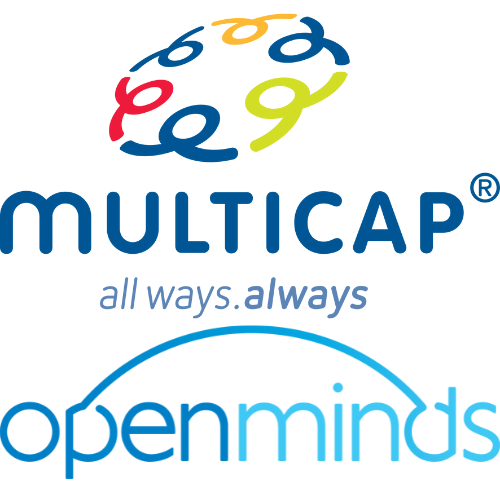
Saturday, 26 July 20251:00 PM - 2:15 pMWest End 1 |
From Evidence to Application: Choice's Empirical Benefit & a Novel Training Strategy for Promoting Animal-Led Choices
Kelli Rust1, Isabella Clegg2, & Eduardo Fernandez1
1The University of Adelaide; 2Animal Welfare Expertise Abstract: Empowering animals through increased choice opportunities within their environment is increasingly recognised as a key contributor to welfare. This presentation summarises findings from my publication The Voice of Choice: A Scoping Review of Choice-Based Animal Welfare Studies (Rust et al., 2024). The purpose of this review was to systematically evaluate and report peer-reviewed studies which investigated the quantitative welfare outcomes of offering managed animals increased choice opportunities. The research question guiding this review was: What is the empirical behavioural and physiological welfare impact of providing managed animals- across any setting - with increased choice opportunities? Results revealed that although choice is heavily emphasised as a gold-standard welfare management strategy, few empirical studies have actually explored choice's quantitative impact on behavioural or physiological outputs—highlighting a critical gap in applied animal research. To bridge theory with application, I will present a training procedure involving a concept behaviour titled You Choose. This behaviour enables animals to make functional selections between potential enrichment devices or rewards during training sessions, and this portion will cover video demonstrations with animals, along with a step-by-step training pyramid for conditioning the "You Choose" behaviour. This behaviour is part of an up-coming, peer-reviewed publication and supports the use of concept training as a welfare-enhancing strategy. Implications are relevant for trainers across diverse settings—including zoos, shelters, farms, and companion animal settings—seeking to promote novel methods which promote animal-led choices. Target Audience: For trainers of all levels working with domestic, shelter, farm, or zoo animals seeking evidence-based, welfare-enhancing research information and training strategies. Learning Objective: At the conclusion of this presentation, participants will be able to:
|
Training oral and open mouth behaviours to advance animal care and husbandry
Jade Fountain Animal Behaviour Matters Abstract: Mouth, muzzle, teeth: training animal oral behaviours for safety, wellbeing and care is important. Each husbandry task we can teach the animals in our care to participate in can improve quality of life by providing early signs of potential health concerns or give us a tool to apply daily preventative care without stress or difficulties each time treatment is needed. The behaviour of voluntarily opening the mouth on cue allows caregivers to inspect or clean teeth and gums, administer oral medication and much more. Is your dog or cat reluctant to have their mouth handled? Do they leave, hide or avoid checks? Is checking their teeth a difficult task? This talk will cover different techniques for training this behaviour across different species, along with the foundation behaviours that may be needed to develop the behaviour. The aim of this talk is to provide you a guide as to how to teach the mouth open behaviour, building on the ever-important foundation of how great teaching husbandry and care behaviours are for empowering the animals in our lives. Target Audience: Animal shelter staff, volunteers, veterinarians, animal behaviourists, and anyone involved in the care and welfare of shelter animals Learning Objectives:
|
Game On: Using Play-Based Interventions to Improve Tolerance of Handling in Fearful Foster CatsKate Cochrane The Lost Dogs Home Abstract: Fear-related avoidance of physical contact is a common barrier to adoption for cats in shelter environments. This case study explores play-based interventions used to increase touch tolerance in fearful shelter cats with a history of hiding, fleeing, and defensive behaviour in response to human proximity. Behaviour modification was conducted in a home environment with two juvenile cats from an RSPCA Victoria shelter. The target behaviour was defined as the cat voluntarily remaining near a human hand and tolerating light contact without avoidance or stress-related signals. Baseline observations included latency to make contact and duration of voluntary proximity. The intervention followed a systematic shaping plan using preferred interactive games paired with positive reinforcement, stimulus control, and choice-based participation. Adjustments were made based on preference testing and observable stress signals. Results showed a gradual increase in handling tolerance marked by voluntary contact, approach behaviour, and decreased latency to interact. The intervention reframed physical contact from an aversive to neutral or positive through reinforcement of agency and positive associations. This case study highlights the utility of Applied Behaviour Analysis principles in feline behaviour interventions and proposes a low-stress, evidence-based alternative to traditional desensitisation techniques used to improve adoption readiness in shelter cats. Target Audience: Anyone working or living with cats, and attendees with an interest in choice-based positive reinforcement training. Learning Objectives: At the conclusion of this presentation, participants will be able to implement game-based training techniques and modify shaping plans in response to feline body language and stress signals. |




.png)


